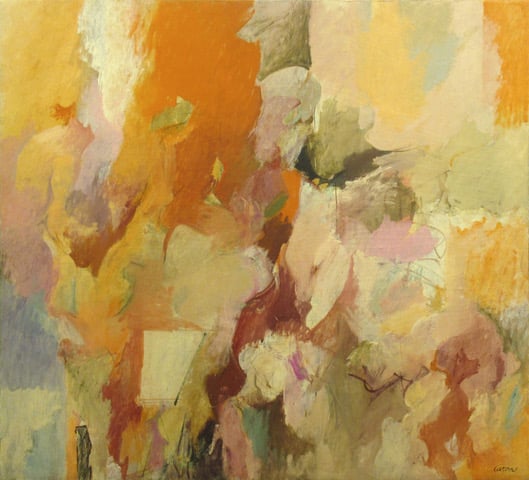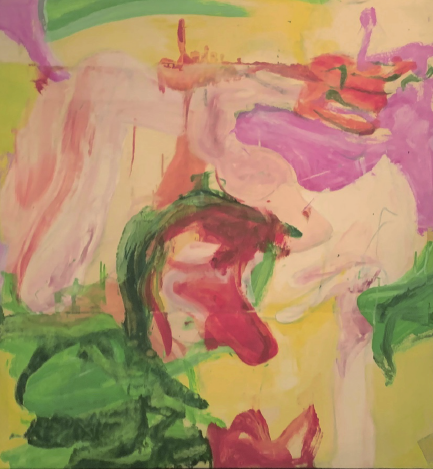In the annals of art history, the East End of Long Island during the middle decades of the past century has become almost mythic—brimming with a cast of cultural titans whose names are now iconic. There, Abstract Expressionists like Jackson Pollock, Lee Krasner, and Willem and Elaine de Kooning were churning out revelatory canvases in alcohol-fueled bursts of creativity. On that small strip of land in the 1950s, the dealer Leo Castelli had a house; Robert Motherwell and Helen Frankenthaler were frequent weekenders; and the local Artists & Writers softball game included such players as Joan Mitchell and Franz Kline.
The story feels thoroughly well-written, almost rote. But a new show at Georges Bergès Gallery in SoHo is shining a light on one of that scene’s lesser-known characters with “Three Mile Harbor Road,” which revolves around the friendship and artistic camaraderie among Pollock, De Kooning, and the surprisingly obscure painter Nicolas Carone.

Nicolas Carone, Psychomachia III (1958) Courtesy of Georges Bergés Gallery.
So who is Nicolas Carone? The Lower East Side-born, Hoboken-raised artist was an Abstract Expressionist of the most vetted tradition: he studied at the Art Students League and at Hans Hoffman’s school, and was a key organizer of the famed “Ninth Street Show“ in 1951. Like Pollock, he made this permanent home in the Springs, a hamlet of East Hampton. The name of the show at Georges Bergés Gallery—“Three Mile Harbor Road”—is the address of his home, one that none other than Pollock helped him to find.
Carone, who died in 2010, later experimented with dreamy figurative scenes, but the works in this show focus on the core of his most important abstractions, including Psychomachia III (Psychomachia II is in the collection of the Whitney Museum of American Art) and Sacred Abandonment. Carone’s brushwork has an emphatic quality, with colors and strokes seeming sometimes to be in competition with each other.
As a testament to the artistic neighborliness that infused his milieu, the show includes a painting that Pollock added some touches to, and another made by De Kooning when he lived in the house previously occupied by Carone. Today, when De Kooning and Pollock seem at times more like emblems of an era rather than artists, this small show, with its pleasant reintroduction of Carone, brings the era back down to human scale and offers a welcome reminder of the day-to-day life that eventually become history.
See images from the exhibition below.


Nicolas Carone, Nuptial Waters (1957). Courtesy of Georges Bergés Gallery.

Willem de Kooning, Untitled (c. 1971). Courtesy of Georges Bergés Gallery.
“Three Mile Harbor Road” is on view at Georges Bergés Gallery through November 10, 2019.






